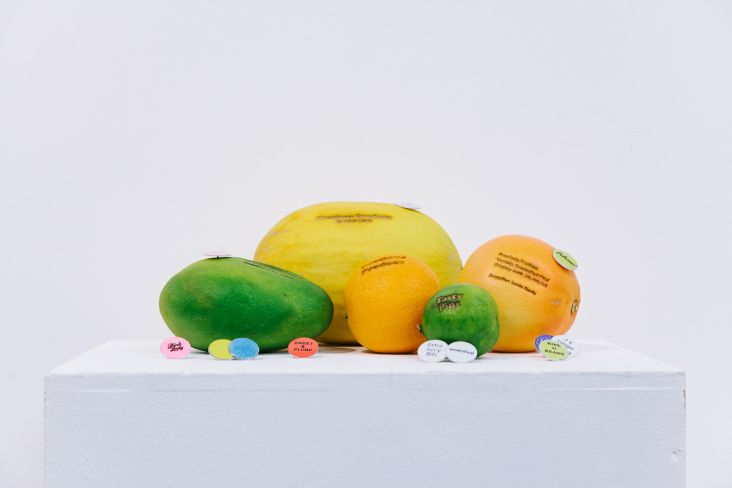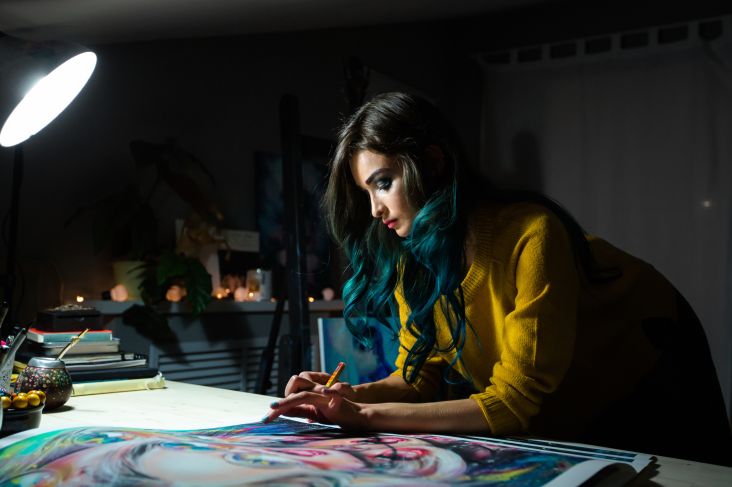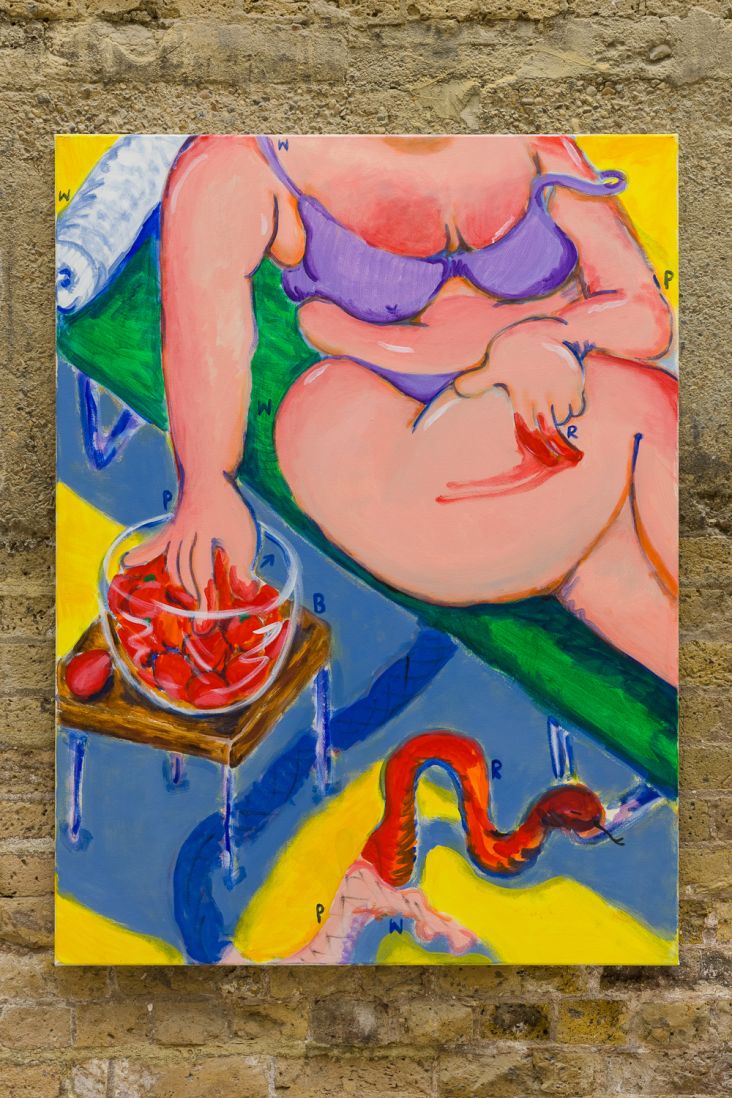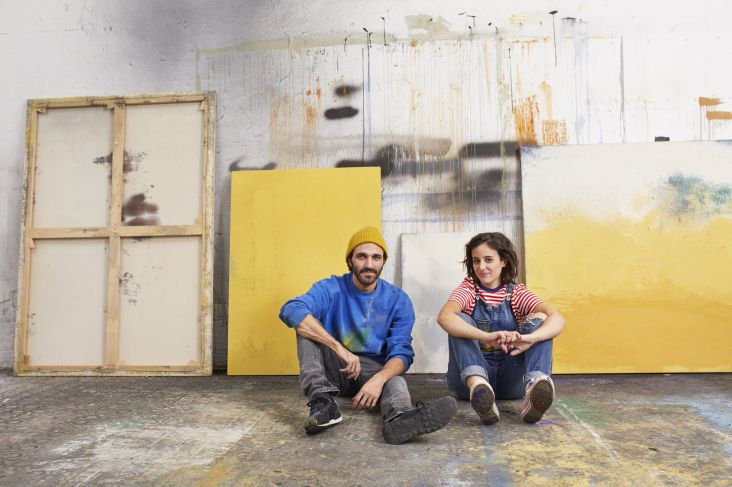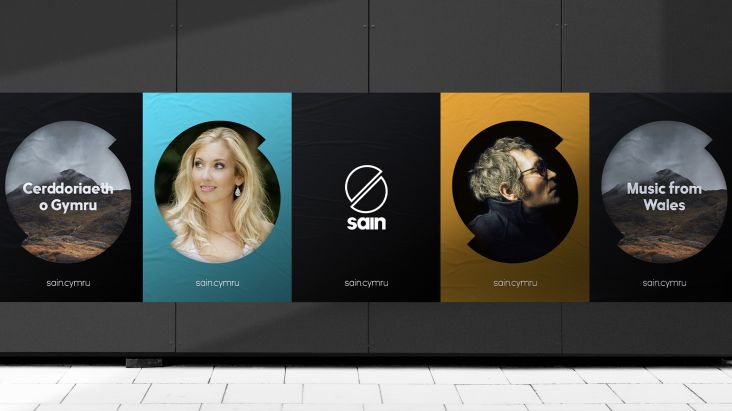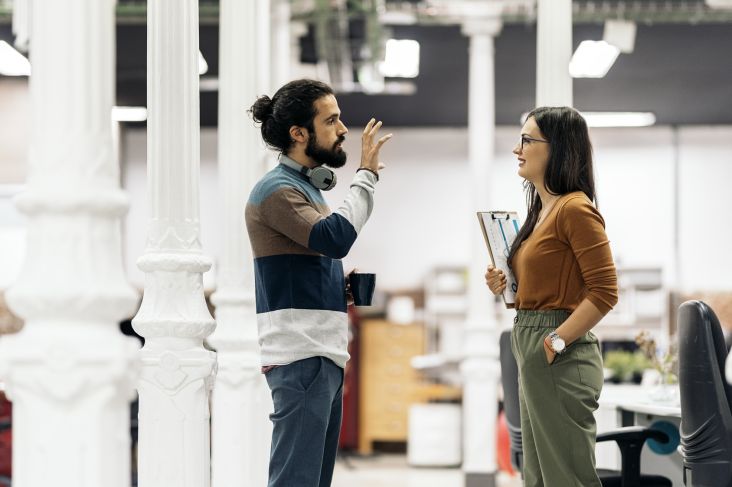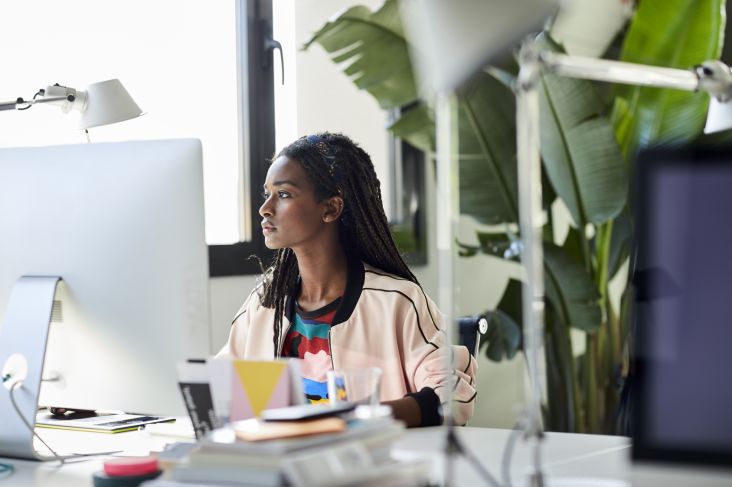How to win your first graphic design project as a freelancer
So you're setting our on your own as an independent graphic designer. Maybe you've previously been working as an employee, or you might be straight out of college. Either way, you just need to land your first project, and you'll officially be able to call yourself a professional freelancer.

Image licensed via Adobe Stock
That first job, though, isn't always easy to come by. Clients tend to stick with established freelancers they know they can rely on and are often unwilling to take a chance on a newbie. It's the old, frustrating story of 'can't get work without experience, can't get experience without work'.
So how exactly do you get your foot in the door and win that all-important first gig, the one that can help establish you on the circuit and give you fresh content for your CV and portfolio?
There's no better group of people to ask than people who've gone through the same process themselves and come out the other side smiling. So we did just that and are sharing their advice, top tips and experiences here.
1. It's not what you know; it's who you know
It doesn't matter how great your work is and how many likes you get on social media; people generally want to hire people they know and trust. In the absence of that, they'll often opt for people who know people they know. So that means the best way to ensure you land your first freelance gig is to harness your network.
You might not think you have one, but almost everyone does. If you've done a course, you can include your past tutors, fellow students, and everyone else you met along the way. If you've done work experience, charity work, or work for friends and family, they all count too. Then there are those people you met at design conferences, talks, and meetups. Obviously include any past employers, but also those nearly-weres; the job interviewers who said you didn't make it past the shortlist, "but do keep in touch".
In short, anyone and everyone you've met or interacted with as part of your design career to date is a potential member of your network. So contact all of them, make it clear you're looking for your first freelance gig, and stress that you'd welcome any help or referrals they can give.
"Be helpful, and communicate well," advises product and UX director Nick Clement. "Your network is your strength. Also, build solid friendships with people including a select few specialist recruiters: it helps to target niche areas that need design help."
"Your network is everything," says design manager and industry mentor Duncan Buchanan-MacDonald. "Go and connect with them, tell them what you're doing, find out what they're doing. But also, work out what you can do to help those folks beyond the obvious day-to-day work of knocking out design artefacts."
"It really is all about people and who you know," agrees designer, illustrator and animator Jordan Yates. "One good connection with a client can roll into more clients as they pass on your name. And remember, first impressions count."
2. How to harness and build your network
So how do you build up your network in practice? "If you're making the shift from working in an agency, or in-house for a company to working as a freelancer, get in touch with the folk you've worked with other the years," advises art director and designer Kirsten Murray. "If people enjoyed working with you before, they'll be keen to collaborate again."
"If you already have lots of contacts, it's easier," adds typographic designer Sarah Cowan. "But even if you don't, really think about who you already know. Make an exhaustive list of everyone and see what the patterns are."
"Stick with peeps you got on with during your previous role, then make MORE connections," says motion designer and director Dan Silverstone. "The more people you know, the more chance you have of a door being opened, which then becomes this sort of viral network of opportunities. One job ends, another starts."
Graphic designer and illustrator Alex Francis adds one extra tip. "Your most important contacts aren't big-name clients," she points out, "they're your fellow designers!"
3. Be prepared for your first meeting
Once you've got in front of a potential first client, how do you win them over and convince them to give you the gig? Part of that lies in arriving prepared… and being ready to hustle.
UX/UI designer John Saunders offers an example from his own career. "I won my first work at an awards evening where all my potential clients were in one room," he recalls. "I was nominated for a website I'd worked on. I had a list of people who'd been nominated, so I knew names; I could circulate and meet face-to-face. I gave out all my business cards. My website, email address, folio and social accounts were already primed."
Pitching for your first gig isn't just about you, though. You also need to make sure you know everything about the person or company you're pitching to.
"Build your case!" urges creative director Jesse Boyce. "Research the business you want to work for, then you'll be equipped to answer their questions before they've even been asked. Analyse competitors in their sector and those in other sectors that talk to the same audience. Be smart, be savvy."
4. Suggest a pre-meeting
However prepared you are, though, pitching to strangers can be intimidating, particularly if you're trying to win your very first project. In that light, Mandy Barker, founder of Sail Creative, makes an inspired suggestion.
"Ask to meet people or the team, face to face or on Zoom pre-proposal," she recommends. "Relationship building wins hands down over putting in a 'blind' proposal. It makes you stand out and also means you can ask questions to make sure it's right for you AND them; it's a two-way street."
5. Convince them you're right for the job
Clients are often nervous of first-time freelancers, worrying they won't be able to deliver because of lack of experience. So it's up to you to demonstrate you know exactly what you're doing.
"Prepare a project outline to help manage client expectations and keep you accountable in initial conversations with the client," advises artist and designer Naomi María Szczesiul Coale. "You should include pre-project talks, times for rounds, revisions, deliverables, and most importantly invoice and expected payment dates."
6. Craft a killer portfolio
None of this will work, though, if you don't have a killer portfolio. So also put the work into crafting one, and be ruthless in paring it down to only the best pieces.
"It really helps to have personal projects in your portfolio that show the type of projects you want, especially if your full-time job is really limited to one type of design like presentation or email," says Naomi. "It's also helpful for fresh graduates to show work beyond student projects."
"Update your portfolio regularly!" adds illustrator and designer Martyna Makes. "Show people what you've been working on: how else will they know skills you've got up your sleeve?"
Also, remember that portfolios don't necessarily have to be about commercial work; personal projects can often be a good fit too. "I think being able to show a client no matter how little or large that design can be a passion past a '9-5 job' is a real asset," believes designer Mat Voyce. "Backing yourself up with personal or passion projects can be the perfect way to express yourself and show clients what you want to work on."
In the same light, Martyna suggests you: "Create personal projects and projects that you WANT to work on but haven't had the opportunity to yet."
7. Keep an open mind
Some graphic designers find it difficult to land their first freelance job because, quite simply, they're too choosy. But as Dan Silverstone points out, you need to get your foot in the door somehow. "So don't be put off by taking seemingly 'boring' jobs," he advises. "Not everyone jumps straight into the good shit; it takes time."
Instead, accentuate the positive. "Even the dullest subject matter can be turned into something brilliant," says Dan. "Just make it your own, enjoy it and turn it into a portfolio-worthy piece."
The team at Studio Malt agree. "Be open to projects in areas and industries you might not have considered," they advise. "Challenge yourself, be enthusiastic and treat each project as your most important. Learning from these early projects will prove crucial in your freelance career path. Oh, and enjoy it!"
8. Be friendly
It might seem an unnecessary point to make. But graphic designers often obsess over the small details of their work while forgetting that a big reason clients often choose one freelancer over another is that they simply like them.
"Be helpful and friendly!" urges graphic designer Liz Mosley. "People want to work with someone they feel comfortable with; it's not just about your work." She adds: "Join Facebook groups and answer people's questions. Share your personality somehow, in a way that works for you. People want to work with nice people!"
Designer Luke Tonge couldn't agree more. "If you're very new to freelance, maybe without a big portfolio, you'll need to demonstrate a passion for the project," he says. "Be enthusiastic, accommodating – within reason – and communicative. Make the client look forward to interacting with you. Don't sound mardy!"
9. Don't overcommit yourself
Here's one final piece of advice. While finding and delivering your first freelance project is important, don't overdo it, and don't let the stress overwhelm you.
As digital illustrator and graphic designer George Grey says: "Rest is as important as hard work. I made the mistake of not taking enough time off or not just stepping away from my desk enough, which eventually led to a stress illness. Good rest will make you more efficient, plus your work will be of better quality."
Conclusion
Winning your first freelance gig requires time, effort, tenacity and a ton of passion and enthusiasm. Do it right, and you'll have set yourself on a path to a successful, rewarding and lucrative career as a freelance graphic designer.
People hire people who know people. So you'll need to both draw your network and keep building up that network to make the right contacts. Once you get a meeting, research the person and/or company fully, so you'll know how best to appeal to them. Do everything you can to prepare a portfolio that will wow them, and make your case with passion, honesty and a friendly approach.
Consider asking for a pre-meeting, and prepare a project outline, so they'll know you're serious. Be open to all sorts of projects, even those that aren't totally in your wheelhouse. And above all, enjoy the ride. You'll never get to experience your freelance project again, so make sure it's one to remember!

















